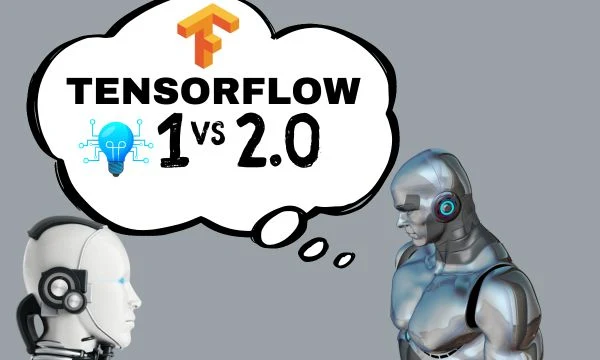
TensorFlow, developed by the Google Brain team, has become a cornerstone in the world of machine learning and deep learning. Over time, it has undergone significant updates, with TensorFlow 2 being a major milestone. In this blog post, we will explore the key differences between the original TensorFlow and its successor, TensorFlow 2.
1. Eager Execution
One of the fundamental changes introduced in TensorFlow 2 is eager execution. While the original TensorFlow used a static computational graph, TensorFlow 2 adopts eager execution by default. Eager execution allows developers to evaluate operations immediately, making the development process more intuitive and interactive. This change simplifies debugging and facilitates a more dynamic workflow.
2. API Improvements
TensorFlow 2 brings significant improvements to its API, making it more consistent and user-friendly. The high-level API, Keras, is seamlessly integrated into TensorFlow 2, becoming the default API for building neural networks. This integration enhances the ease of use and accessibility, making it more convenient for both beginners and experienced developers.
3. Compatibility and Ease of Transition
Transitioning from TensorFlow to TensorFlow 2 is designed to be smooth. The latter maintains compatibility with many TensorFlow 1.x scripts, allowing developers to upgrade their projects gradually. However, certain legacy functionalities have been marked for removal in future versions to encourage the adoption of TensorFlow 2 features.
4. TensorFlow Datasets and TensorFlow Hub
TensorFlow 2 introduces new modules, such as TensorFlow Datasets and TensorFlow Hub, which simplify the process of obtaining and sharing datasets and pre-trained models. These modules enhance the ecosystem and encourage collaboration by providing a centralized repository for machine learning resources.
5. Automatic Differentiation
Both TensorFlow and TensorFlow 2 support automatic differentiation, a crucial component in training neural
networks. However, TensorFlow 2 incorporates the tf.GradientTape API, offering a more
intuitive and flexible approach to automatic differentiation. This enhancement empowers developers to
customize the training process with greater control.
6. Model Deployment with TensorFlow Serving
TensorFlow 2 continues to support TensorFlow Serving for deploying machine learning models. TensorFlow Serving simplifies the process of serving models in production environments, ensuring scalability and efficiency. This feature remains a valuable asset for organizations deploying machine learning solutions at scale.
7. Improved Performance
TensorFlow 2 includes performance optimizations that contribute to faster and more efficient execution of machine learning tasks. These enhancements, along with the removal of redundant functionalities, lead to improved overall performance, making TensorFlow 2 a compelling choice for computationally intensive projects.
8. TensorFlow Extended (TFX)
For end-to-end machine learning workflows, TensorFlow 2 integrates with TensorFlow Extended (TFX). TFX is an end-to-end platform for deploying production-ready machine learning models. This integration streamlines the process of taking a model from development to deployment, making it easier for organizations to implement machine learning solutions at scale.
| Feature | TensorFlow | TensorFlow 2 |
|---|---|---|
| Eager Execution | No (static graph) | Yes (eager execution) |
| API | Complex | Simplified with Keras |
| Compatibility | Compatible with 1.x, gradual deprecation | Maintains compatibility with 1.x |
| Modules | Later introduction of Datasets and Hub | Includes Datasets and Hub |
| Automatic Differentiation | Supports | Enhanced with tf.GradientTape |
| Model Deployment | TensorFlow Serving | Continues support for Serving |
| Performance | Optimizations | Enhancements for faster execution |
| TFX Integration | Integration with TensorFlow Extended (TFX) | Integration with TFX for end-to-end ML workflows |
Conclusion
In conclusion, TensorFlow 2 represents a significant evolution of the original TensorFlow, introducing improvements in eager execution, API design, compatibility, and performance. The integration of Keras as the default high-level API and the addition of modules like TensorFlow Datasets and TensorFlow Hub contribute to a more user-friendly and collaborative machine learning ecosystem. As the field of machine learning continues to advance, TensorFlow 2 stands as a powerful tool for researchers and developers alike, enabling them to create sophisticated and efficient machine learning models.





0 Comments